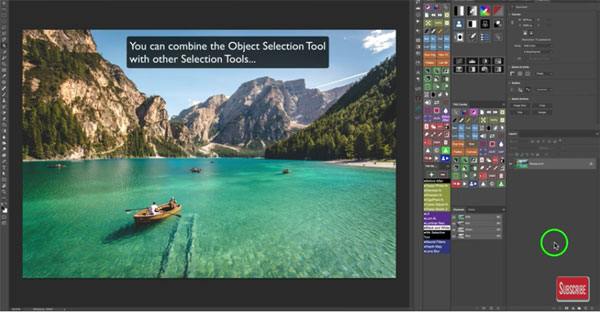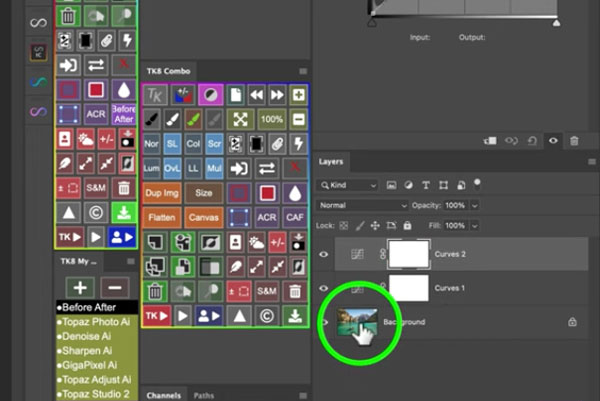Celebrity organisers, The Style Sisters, reveal their top toy storage solution for a tidy living room
You don’t have to compromise aesthetics for functionality
We’re always on the lookout for unique techniques that enable you to capture artistic images that look different from others, and help you develop a style all your own. Today we have a good one that covers all three goals through the use of intentional camera movement (ICM).
What makes this technique so eye-catching and unique is that it results in images that are the opposite of what most of us strive for; namely, sharp photos with precise focus. With ICM the goal is to add depth and visual interest by moving the camera in specific ways during a long exposure.
You’ve probably seen ethereal images that almost seem to be alive, with action subjects rushing through the frame, cityscapes that almost appear to have been captured during an earthquake, and even landscape photos with these effects. And that’s exactly what you’ll learn to do in the video below.

The imagery of Eva Polak is recognizable because of the impressionist style she employs in a variety of ways. In describing her work she says, “I believe every photograph has the potential to be a work of art.” One of the methods she uses with regularity is ICM, and her images reflect the emotion, beauty, movement and flowing colors of this technique.
Whether you shoot handheld, or employ a tripod under certain conditions, this technique isn’t difficult to master if you follow Polak’s advice and do a bit of practice and experimentation. And trust us, the dynamic results you’ll achieve will be well worth the effort.
As you’ll see, there’s a bit more to ICM than choosing a slow shutter speed and moving the camera randomly during the exposure. That’s why the first letter of ICM stands for “intentional.” In other words, every movement you make should be done with purpose,

Polak demonstrates everything you know to get started in less than five minutes. You’ll learn how create a variety of looks by panning, tilting, and moving the camera in other ways—things you could have done with many of the images you shot in the past. So practice up, because in the future we plan to take a deeper dive into this interesting technique.
All you have to do to view more of Polak’s stunning work is pay a visit to her YouTube channel. We also suggest you watch the tutorial we posted from another accomplished photographer, explaining how to give photos a unique eye-catching look by capturing sunstars in the camera.
One of the most common image-editing tasks is cleaning up a photo by eliminating distracting elements. Until recently the standard approach involved turning to Photoshop’s Object Selection tool, and using or one or more time-consuming options to vaporize and fill the mess.
Today’s eye-opening tutorial comes from The Joy of Editing, a popular source of image-editing tips and tricks for photographers of all skill levels. As you’ll see, there’s a new sheriff in town with the recent addition of a Delete and Fill Selection trick to the Object Selection tool than makes it a breeze to remove unwanted junk with precision.
Instructor Dave Kelly frequently shares his imaging-processing expertise in straightforward instructional videos, designed for novices and experienced photographers alike, to get you back out shooting in a hurry. In today’s eye-opening episode he says Photoshop’s new Delete and Fill Selection option “is a real gem,” demonstrates how to use it, and explains why it’s so preferable to previous methods.

If you open Photoshop before viewing the video you may not even see this option in the Object Selection panel. In that case, all you have to do is update your Photoshop to the latest version.
Kelly opens up a really nice photo of a boat floating in a tranquil lake with imposing peaks in the background. It looks almost perfect as is—until Kelly zooms in and discovers a few elements he wants to remove. He briefly demonstrates the old approach before walking you through the wonders of the Delete and Fill Selection technique. This way you’ll really appreciate how the new methods speeds up the workflow.
Adobe describes the new capability like this: “We have a new feature that lets you quickly remove any object in your image with a dialog-free experience.” Additionally Adobe repurposed the [SHIFT] + [DETELE] and [SHIFT] + [BACKSPACE] keys when in the Object Selection tool to act as a Content-Aware Fill command.

This may sound like a mouthful, but it’s a really big deal. And there’s even a bonus, as Adobe also added built-in pixel expansion so users can avoid halos without additional steps in the process.
OK, so that’s what the Delete and Fill Selection feature does, but how does it work? You’ll learn everything you need to know in eight minutes by watching the video below. There’s much more to see on Kelly’s instructional YouTube channel, so be sure to pay a visit.
We also recommend watching another video tutorial we posted recently, explaining a timesaving Lightroom trick for culling images and speeding up your workflow.
